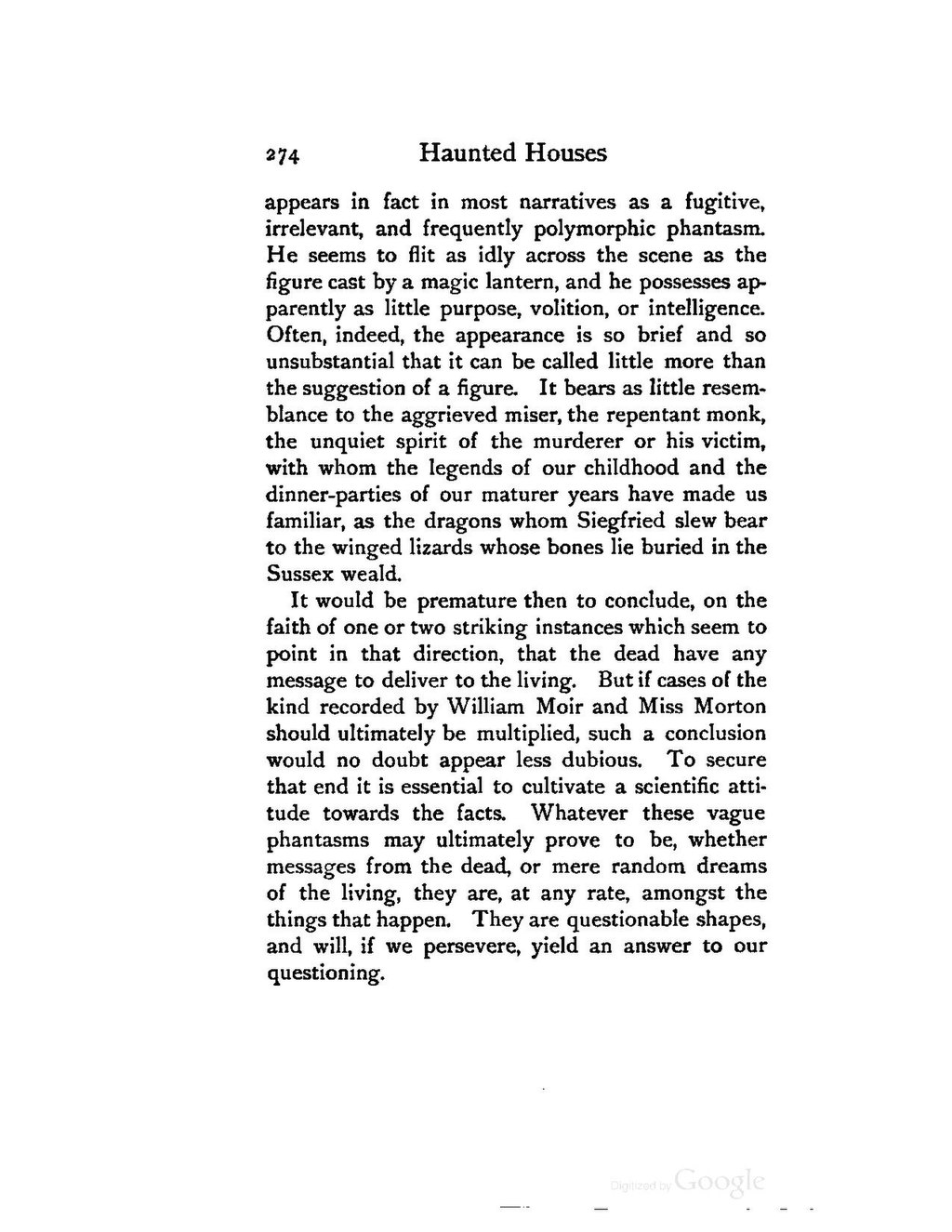appears in fact in most narratives as a fugitive, irrelevant, and frequently polymorphic phantasm. He seems to flit as idly across the scene as the figure cast by a magic lantern, and he possesses apparently as little purpose, volition, or intelligence. Often, indeed, the appearance is so brief and so unsubstantial that it can be called little more than the suggestion of a figure. It bears as little resemblance to the aggrieved miser, the repentant monk, the unquiet spirit of the murderer or his victim, with whom the legends of our childhood and the dinner-parties of our maturer years have made us familiar, as the dragons whom Siegfried slew bear to the winged lizards whose bones lie buried in the Sussex weald.
It would be premature then to conclude, on the faith of one or two striking instances which seem to point in that direction, that the dead have any message to deliver to the living. But if cases of the kind recorded by William Moir and Miss Morton should ultimately be multiplied, such a conclusion would no doubt appear less dubious. To secure that end it is essential to cultivate a scientific attitude towards the facts. Whatever these vague phantasms may ultimately prove to be, whether messages from the dead, or mere random dreams of the living, they are, at any rate, amongst the things that happen. They are questionable shapes, and will, if we persevere, yield an answer to our questioning.

